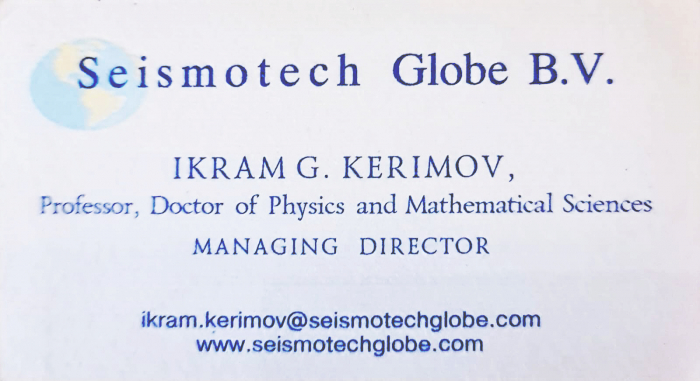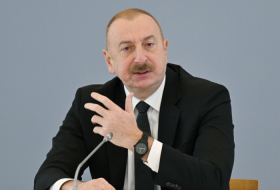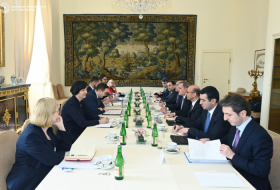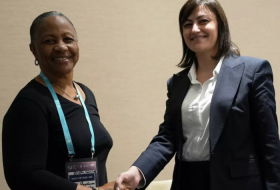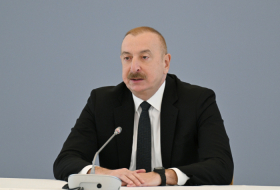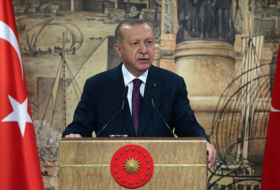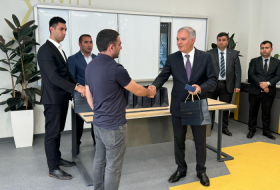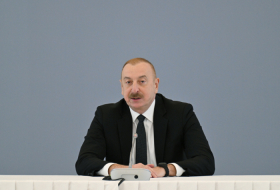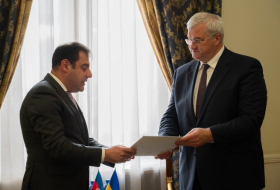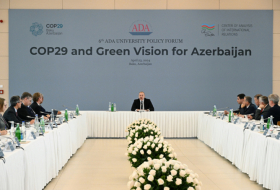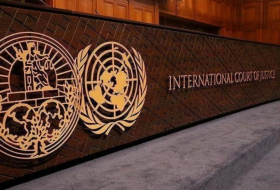As soon as the possibilities on the earthquakes in Turkiye being induced were voiced, the Azerbaijani scientist Ikram Kerimov became a household name of sorts. He was the one, who headed the ‘Mercury-18’ secret project on developing a tectonic weapon in the USSR. However, finding him proved to be extremely difficult, as no one knew his whereabouts, which had produced quite a number of myths about him. AzVision’s initial attempts to locate this interesting man ended in failure as well.
Alas, we managed to meet with him. A true intellectual, a man with the face of a genuinely experienced scientist sat before us. It was clear as day that none of the pictures that came up when we looked him up on the Internet was of him. Unfortunately, he ardently refused to have his photo taken this time as well.
- We would like to lay the myths around your persona to rest. The earthquakes in Türkiye raised many questions about the field you used to engage in. Did you really lead the Soviet-era tectonic weapon project?
‘Yes, I did work on that weapon. I was the scientific director of a secret program.’
- When and where did the developments stop?
‘They were discontinued in 1992. All the more so, I no longer intended to work with them after the January 1990 events. There were two programs at the time. One of them was the ‘Mercury-18’ everyone is writing about. We worked on that program for 6-7 years. But we started working on the other in 1989. It was a project on building a protective seismic system around Moscow and the Moscow Region. I was in charge of that project, too.’
There was an earthquake in Rasht, Iran, in 1990. When we had been researching another earthquake before that, I had told them (leadership of the USSR Ministry of Defence – editor’s note) we had to stop the explosions. We had to take measurements in a larger area around. They could cause earthquakes if there were tectonic gaps. They, however, made explosions wherever. A leg of those blasts hit Rasht.
I addressed a letter to Moiseyev, Chief of General Staff, and clearly stated that they had caused the earthquake and that I would have the statement published in the media. I put the letter together and showed it to Academician Eldar Salayev (head of the Azerbaijani National Academy of Sciences at the time – editor’s note) to notify him. Salayev said: ‘You are doing the right thing. But let me also send this letter to the USSR Academy of Sciences.’
Salayev sent the letter to the Academy of Sciences on his behalf and myself to the military. A few days later they responded: ‘We agree with you. Let’s hold an international conference in Baku, invite scholars and make a statement about the disadvantages of these blasts.’ They held the conference in Baku, where it was announced for the first time that nuclear explosions had the capacity of inducing earthquakes.’
- What changed after that?
‘I left for Iran because Rasht had reported their intentions to build a nuclear power station. I had a meeting with the rector of Tabriz University and warned them against building a nuclear power plant there because the area had been affected and certain changes were absolutely crucial. External impact increased the probability of an earthquake.
I was told that there was no problem because Russia had sent superb specialists who had carried out all the necessary measurements. I notified them that there was no way for those experts to be able to predict the force of those tremors. They did not believe me.
The project was developed by a Design Institute in Moscow. I found them upon my arrival back in Moscow. Superb experts they were, but they had insufficient expertise in induced processes. When the quakes are caused by artificial situations, the magnitude is usually much higher. For example, a magnitude of 4 under normal circumstances might go up to 8 or 9 in an induced state.
I returned to Tabriz to meet with the rector again and notified them that although they were experts, they were not aware of the information I had on my hands. They sent for someone from Tehran, whom I also met. They shut down the project after that. The Academy of Sciences were also aware of the talks.’
- Let’s go back to the tectonic weapon. Does it really exist?
‘I find it strange whenever someone insists that there is no such thing as a tectonic weapon and that it can have no effects. I always wonder what it is exactly that they do?!
The first earthquake induced by a tectonic weapon was observed in 1978. Our investigation revealed that there had been a nuclear explosion in Semipalatinsk on 15 September 1978. We observed it and recorded the changes in the environment. There was a great earthquake in Tibet towards the evening hours of 16 September 1979. I wrote with a 90% certainty at the time that the earthquake was caused by the same blast.
They wrote me back, saying the scientists did not agree. I then started studying other earthquakes. I discovered that another earthquake had happened earlier, in 1976 in Gazli, Kazakhstan. Measurements insist that there cannot be earthquakes with a magnitude higher than 4 in Gazli, however, it had experienced one with a magnitude of 9. This was a 100% induced earthquake.

Gazli in ruins after the earthquake
I reported back to the Headquarters that the blast they had made had caused an earthquake not only in Tibet but also in Gazli in 1976. The risk for all buildings had been calculated for an earthquake of 4 points there. They once again sent feedback saying I was wrong and that it was not so.
We, on the other hand, carried on with more research and measurements. I wrote back that if everything continued the way it was, there would be another tremor in the same area of built-up stress within 8 years. Many people wrote against our idea, insisting that what we said was improbable. Scientific articles and press releases reported that an earthquake of that magnitude could occur in that area once in 10,000 years. I, however, had predicted one within 8 years.
An earthquake hit in 1984. This demonstrated that outside influence could artificially accelerate natural processes. For example, the probability of an earthquake in Gazli had just increased by more than a thousand-fold.
Measurements elsewhere showed that the collider built in New York increased the likelihood of tremors in Europe by more than 5000 times.’
- So, had there been an induced earthquake in Azerbaijan in those years?
‘The Ministry of Geology and the USSR Academy of Sciences developed a joint project in 1981 to conduct research in Shamakhi and Ismayilli areas. They stated at the meeting that they were going to check the change in the speed of processes in a geological environment through explosions. Funds were also allocated for this. I strongly opposed the idea and said that no explosions could be set off in the area! The technical foundation of the program was also not set up correctly. They had been using very low-accuracy devices. However, we could not be fully open about our position, because certain covert cases had already started.
We also set up our seismic station devices in Shamakhi and Ismayilli regions, in Padar and Pirgulu. We started measuring two weeks before them amd recorded the seismic background in the area until 1 June. The explosions had started by that time. They detonated 5 tons of TNT every two days. We were watching it the entire time. They packed up their devices and left on 31 August.
When an area has been subjected to artificial influence, the processes will start running in an automatic mode once the seismicity reaches a certain level. The environment in Shamakhi and Ismayilli had switched to that mode. I reported that there would be a strong earthquake in the area within 3 to 6 months. Once again, I received a reply, saying it was impossible. We had also packed up our devices. We went back there in October, set up and started measuring. This time, I predicted an earthquake with a magnitude of 5 or more within 2 months.
Not 1, but 4 earthquakes hit on 1 November. They had set up a large commission, with representatives joining from Moscow, the Ministry of Defence, and the Academy. I instructed the staff to report all data we had. The document adopted after 10 days reported that the earthquake had been naturally building and the explosions acted like a trigger. I was told to sign. I objected that the note was completely wrong. There had been no natural stress build-up, as the periodicity of tremors in Shamakhi was 60-70 years. Only 3 years had passed since the last shock and there was no question of build-up. They had brought up the seismic background from zero. I still signed, because it was the first document adopted within the previous 5 years, which clearly stated that earthquakes could be induced.
They later applied to the Politburo to start a special program. And I became the scientific supervisor.’
- Are we talking about the ‘Mercury’ program?
‘Yes. There had been similar trials in the USA at the time.’
- Did you manage to get any results?
‘The necessary results had been achieved.’
- Our conversation so far clearly shows that explosions can induce quakes. Could the tremors be induced on purpose?
‘It seems, they could.’
- There have been some opinions on space interventions in the earthquake in Türkiye. Were such methods employed in your time?
‘I can’t say anything about the impact from space, but there can be influence from the Earth. I specifically showed the Ismayilli example to illustrate that there can be two types of induced earthquakes. In one case the impact is unintentional: The earthquake background is activated and reaches a certain level. Even if you stop all activity afterwards, the process continues automatically. Each environment has its own properties. You need to learn specifically how the stress is built up and reaches a certain level before a release. There is no inkling of doubt that the wars in Syria and Ukraine have had an impact on the earthquake in Türkiye. It is a little hard to imagine. An outsider might say it’s impossible. Ukraine and Türkiye are too far away. But the members of the Academy must have been aware of this. I find it strange when they insist that it is not plausible.

HAARP Research Facility
For example, we were conducting ceaseless measurements in Azerbaijan when the war in Iraq started in 1991. We discovered that there had been major changes here. Further research showed that the war in Iraq had substantially changed the levels of background noise here, 1200 km away from the combat zone. Stations in Absheron and elsewhere had recorded it. We began to study the effects of war on seismicity. We revealed that the frequency of small earthquakes in Türkiye, Iran, and the Caucasus had increased 3-4-fold. The same was happening in Bulgaria and Greece.
I presented this data at a major conference in Vienna in August of the same year, showing what changes could take place despite great distances. The small earthquakes were too great in numbers, and they turned into stronger tremors in some areas. There was a big shock in Georgia in April. The Georgians asked us if it could have been induced. We confirmed.
After that, we followed changes in the seismic background whenever a war started. We measured in 3 spots when the war in former Yugoslavia began. One of them was the Rivne Nuclear Power Plant. As the USSR collapsed, the Ukrainian government asked Azerbaijan to build a protective system against manmade events on their territory within the Azerbaijan-Ukraine joint program. I was the scientific director of the project until 2000. One of the other stations was in Azerbaijan, and another in Tatarstan. We recorded the changes as soon as the war commenced. The process was powerful. The impact depends not so much on the distance, but the intensity of the environment. If it is sensitive, it will respond. I later published the data as an article jointly with Professor Anar Alizadeh at a conference in San Diego, the USA, in 2001.’
- Some believe that your research was used when the HAARP facility was built in Alaska. Is it true?
‘The impact principle is one thing, the method of that impact – whether it is electromagnetic or vibration based – is another. I know that the launch of HAARP in 1994 had a long-range impact. We followed it.
We saw a growth in the number of earthquakes in Europe in 1994. As the collider launched in New York, we stopped observing the HAARP, as the impact from the collider was much greater. I wrote about it in the media as well. There were around 2000-2500 small earthquakes in Western Europe from 1994 to 2000. As the Ion Collider was launched, the number rose to 5000-5500. As the collider was set up in Geneva, the number plummeted to 200-250. That is when I realized the true purpose of the Large Hadron Collider. I have written about it as well; it is not secret information.
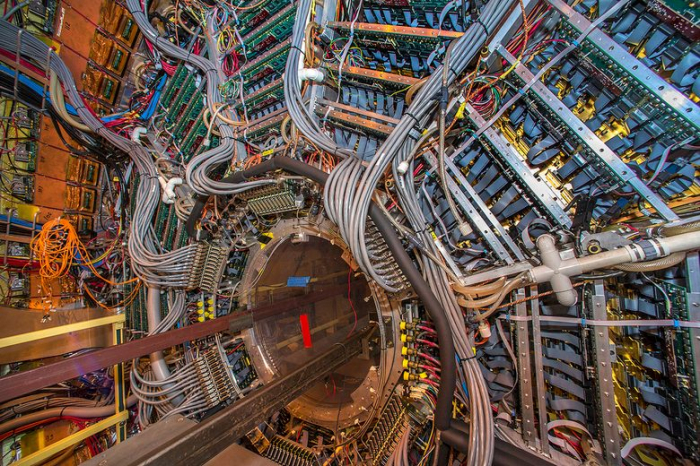
Relativistic Heavy Ion Collider, Ridge, New York
When I worked as an expert on nuclear explosions at NATO, I informed both leaders of the project about it. I reported that there were numerous nuclear power plants in Europe, albeit no protective system. It should have been built because there could have been outside impact. They said it was not their problem. I found out what exactly they were engaged in when the collider was launched and the number of tremors dropped by over 20 times. Aside from the scientific aspect of the collider, its main objective is militaristic. It does not allow the build-up of stress in the seismic background. It releases the accumulated stress.’
- Do we understand correctly that the Large Hadron Collider in Geneva was launched as a countermeasure to the New York Collider?
‘As the negative impact of the New York collider reached Europe, they activated their own to neutralize the background. And the entire energy was focused on the Asian continent…
(To be continued)
Vusal Mammadov
Aytan Zahra
More about:








